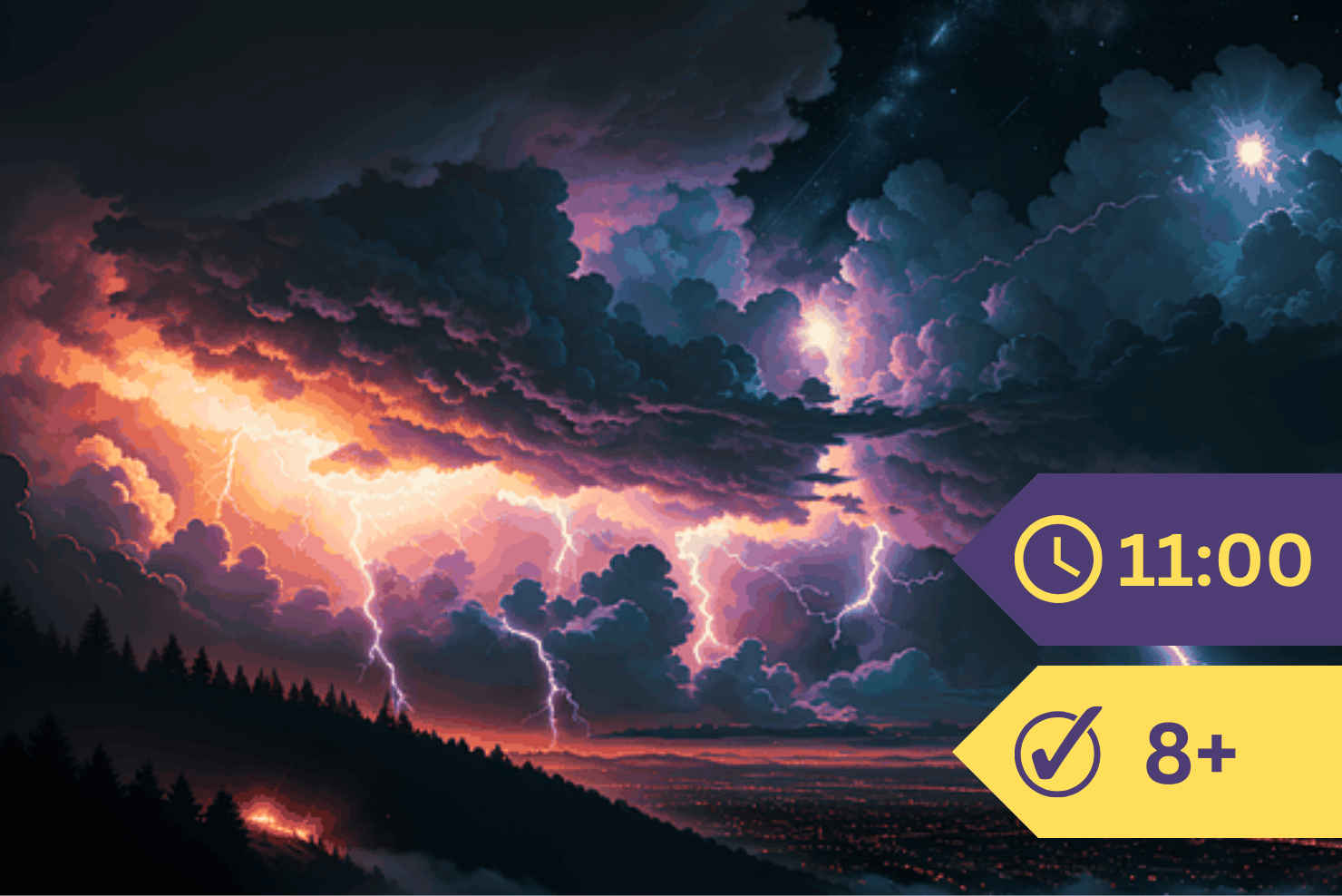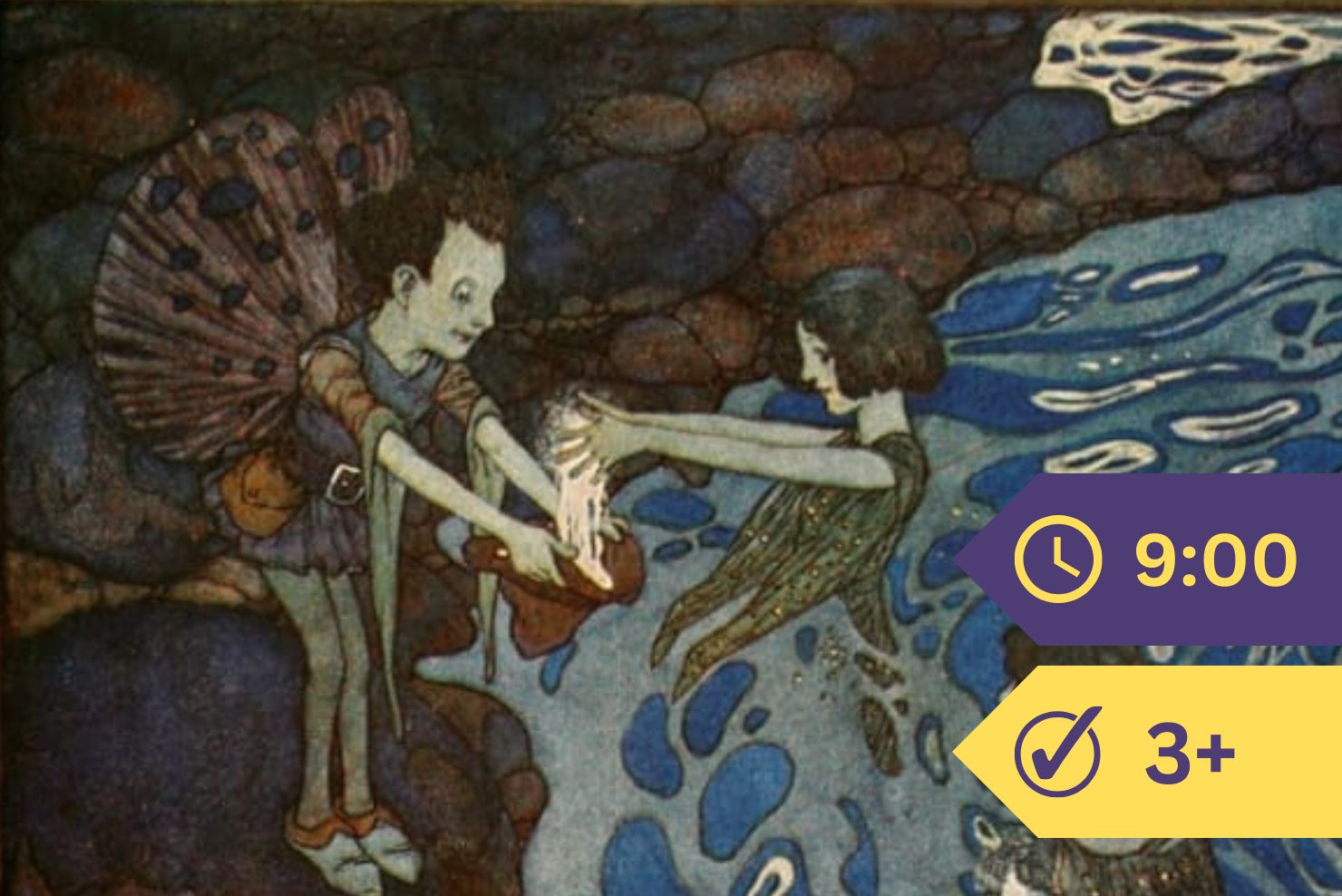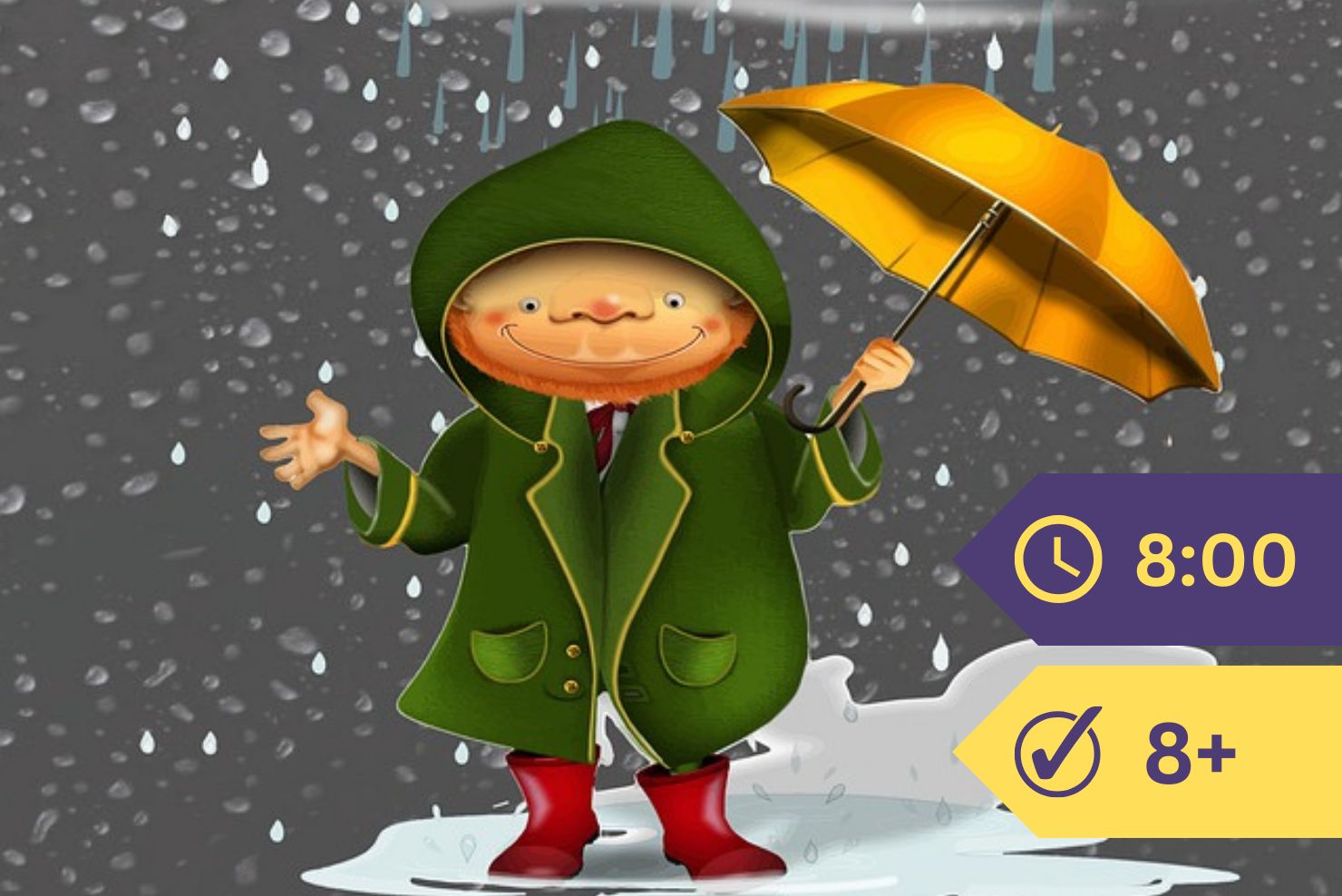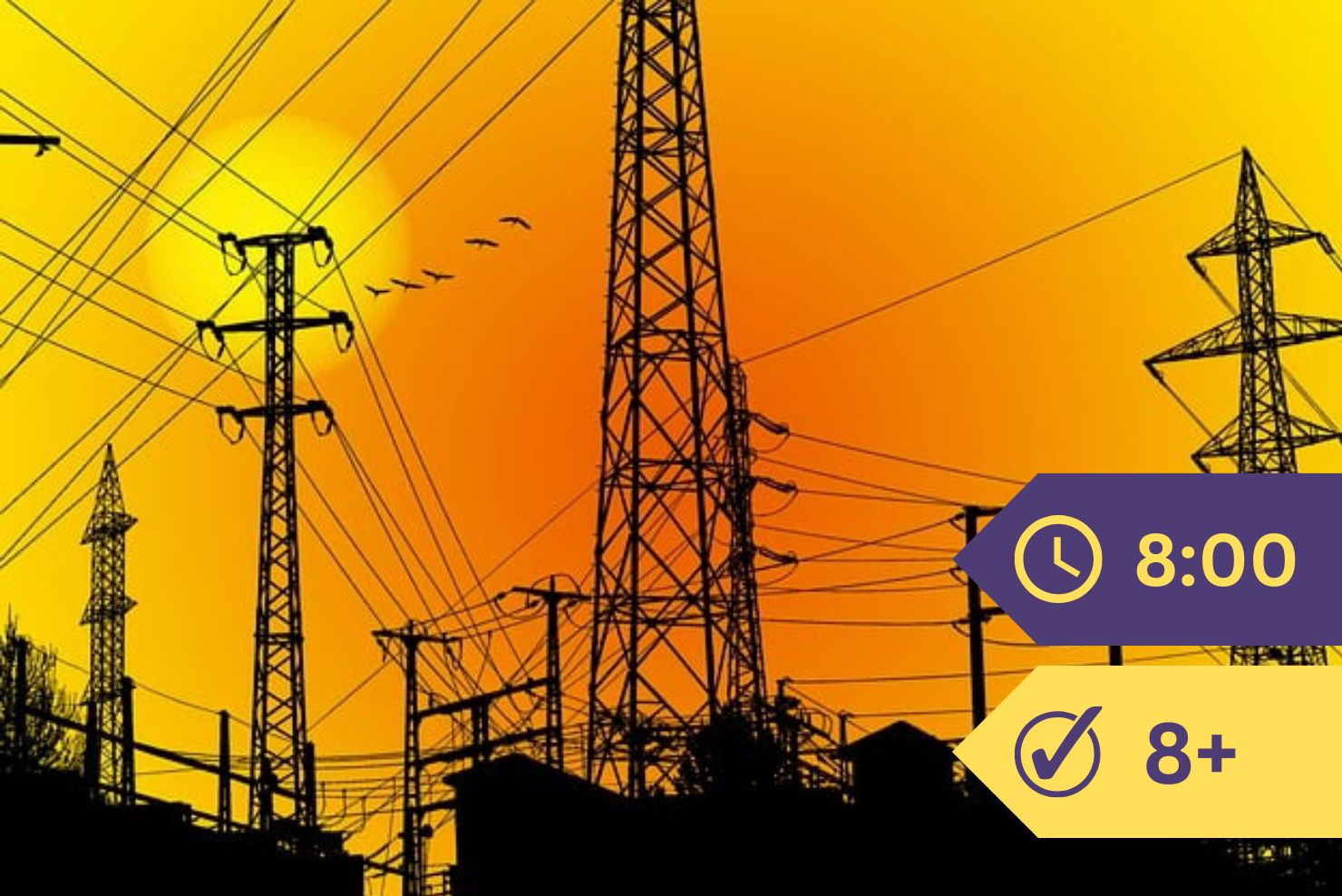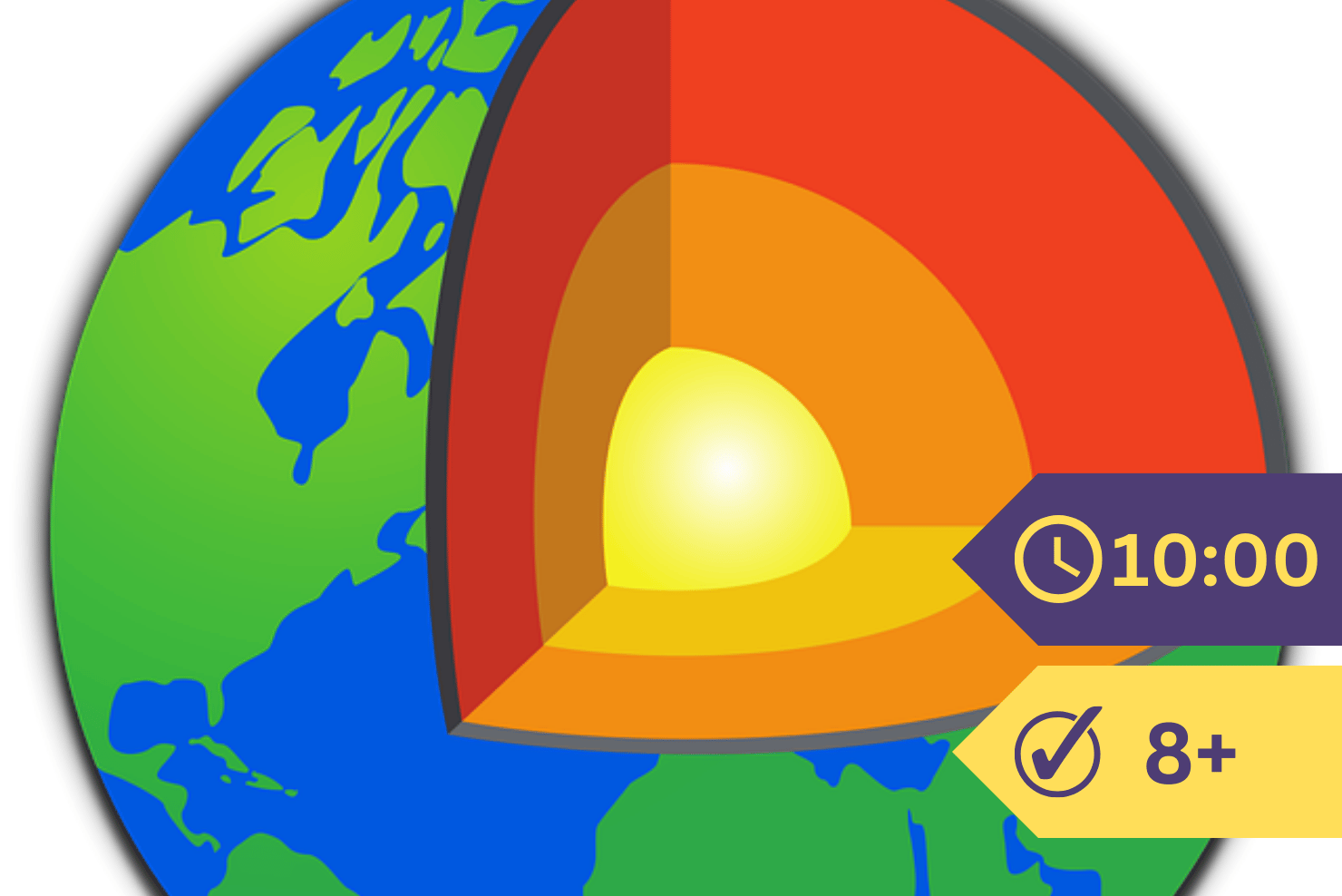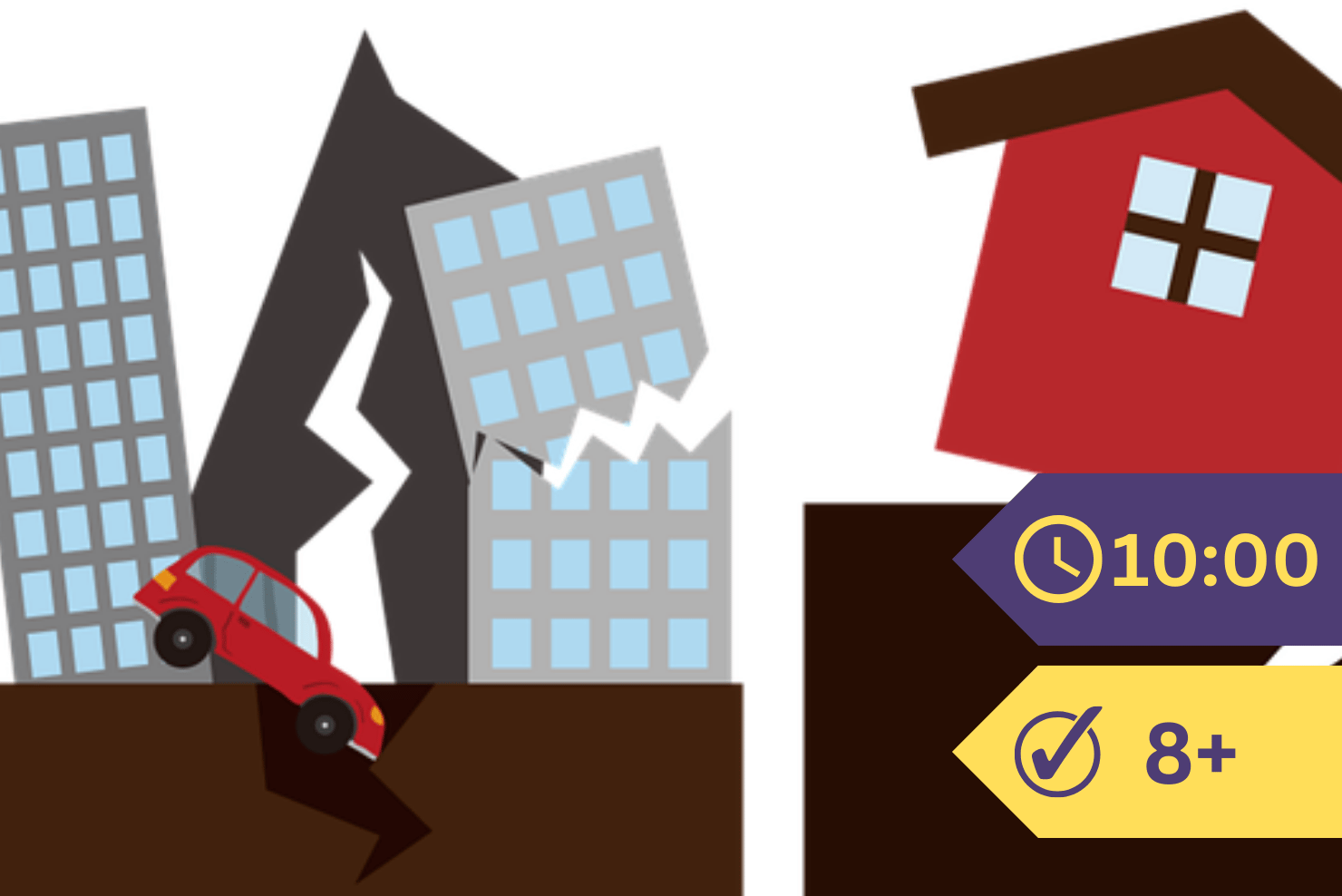The next morning uncle Paul told the children about clouds. The were sitting in the garden and looking at the sky. In one part of the sky great white clouds like mountains of cotton were piled up. It looked beautiful.
“You remember,” he began, “all those fogs that on damp autumn and winter mornings cover the earth with a veil of gray smoke, hide the sun, and prevent us seeing a few steps in front of us?”
“Looking into the air, you could see something like fine dust of water floating,” said Claire; and Jules added: “We played hide and seek with Emile in that kind of damp smoke. We could not see each other a few steps away.”
“Well,” continued Uncle Paul, “clouds and fog are the same thing; only fog spreads down around us and you can see what it is, gray, damp, cold; while clouds keep more or less above us and often look very impressive. There are some are as white as snow, like those you see over there; others are red, or golden, or like fire; other have the color of ashes, and others are black. The color changes from moment to moment. At sunset you will see a cloud begin with being white, then turn scarlet, then shine like a pile of embers, or like a lake of melted gold, and finally become dull and turn gray or black, this happens because the sun shines less and less on the clouds as its going down. So it’s all a matter of illumination by the sun. In reality, clouds, though they look amazing, are formed of a damp vapor like fog. If you would come near a cloud you would see this.”
“Can people get as high as the clouds, uncle?” Emile asked.
“For sure. If you climb to the top of a very high mountain, clouds are often under your feet.”

“And have you seen clouds underneath you?”
“A couple of times.”
“That must be a very beautiful sight.”
“So beautiful that words cannot express it. But it can also be a bit scary if the clouds gather all around you. Then all you see is fog. You lose your way; you become confused, without suspecting any danger in the most dangerous places, at the risk of falling into some abyss; you lose sight of the guides, who alone know the way and could save you from a false step. No, all is not roses up among the clouds.
So let’s just pretend that we’re on top of a cloud-capped mountain. If circumstances are favorable, here is what we see: “Above our heads the sky, perfectly clear. The sun shines there. Down there at our feet, almost in the plains, white clouds spread themselves out. The wind sweeps them before it and drives them toward the summit. There they are, rolling and mounting up the side of the mountain. You could think they were immense flocks of cotton pushed up the slope by some invisible hand. Now and then a ray of sunlight penetrates their depths and gives them the brilliancy of gold and fire. The beautiful clouds behind which the sun disappears at its setting are coloured richly. They mount higher and higher. Now they roll up like a shining white band around the top of the mountain, and hide the view of the plain from us. Eventually the clouds will surround us. Warm tints, soft outlines, striking views—all have disappeared. It is now only a dark fog with moisture, that will make us feel depressed. A bit of wind to sweep away the foggy clouds would be nice!
“The clouds so beautiful at a distance, are nothing but gloomy fog when close by. The spectacle of the clouds should be seen from afar. When in our curiosity we wish to examine certain appearances too closely, we sometimes find them deceptive. The marvels of the clouds are only an appearance, an illusion of light; but under this illusion are concealed the reservoirs of rain. The gray vapor of the clouds gives us rain. That is its most important task.”
“The height of clouds is very variable and is generally less than you might think. There are clouds that lazily trail along the ground; they are the fogs. There are others that cling to the sides of moderately high mountains, and others that crown the summits. The region where they are commonly found is at a height varying from 500 to 1500 meters. In some rather rare instances they rise to nearly 20 kilometers. Above that clouds never go, thunder never rumbles, and snow, hail, and rain never form.”
“Those clouds high in the sky are called ‘cirrus’ that sometimes look like light flocks of curly wool. They are the highest of all the clouds. They are often 4 kilometers high. When cirrus clouds are small and rounded and closely grouped in large numbers, so they kind of look like a flock of sheep, the sky thus covered is said to be dappled. It is usually a sign that the weather is going to change.”
“The name ‘cumulus’ is given to those large white clouds with round outlines which pile up, during the heat of summer, like immense mountains of cotton-wool. Their appearance presages a storm.”
“Then the clouds we see over there next to the mountains,” asked Jules, “are cumulus? They look like piles of cotton. Will they bring us a storm?”
“I don’t think so. The wind is driving them in another direction. The storm always takes place near the clouds. There! Hear that!”
A sudden light had just flashed through the flocks of the cumulus. After a little while the noise of the thunder reached them, but weakened by distance. Questions came quickly from Jules’s and Emile’s lips: “Why does it rain over there, and not here? Why does the noise of the thunder come after the lightning? Why—”
“We are going to talk about all that,” said uncle Paul; “but first let’s learn the other forms of clouds. ‘Stratus’ are clouds that are disposed in irregular bands placed in tiers on the horizon at sunrise or sunset. They are clouds that, in the fading daylight, especially in autumn, take the glowing tints of melted metals and of flame. The red stratus of the morning are followed by rain or wind.”
“Finally, we give the name ‘nimbus’ to a mass of dark clouds of a uniform gray, so crowded together that it is impossible to distinguish one cloud from another. These clouds generally dissolve into rain. Seen from a distance, they often look like broad stripes extending in a straight line from heaven to earth. They are trails of rain.”
“And now you can ask your questions.”


